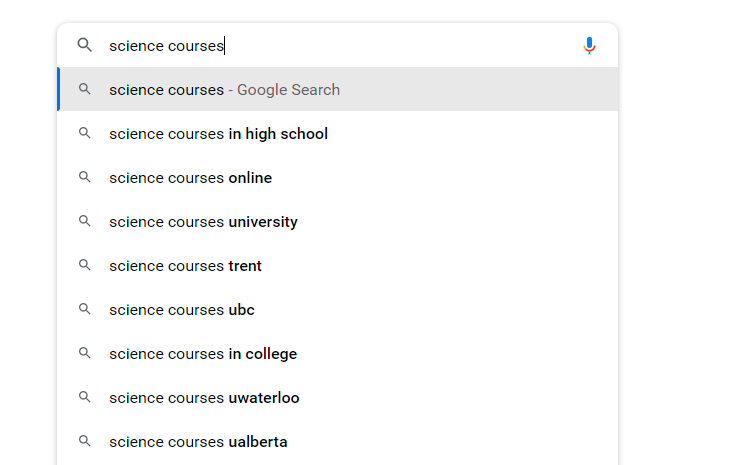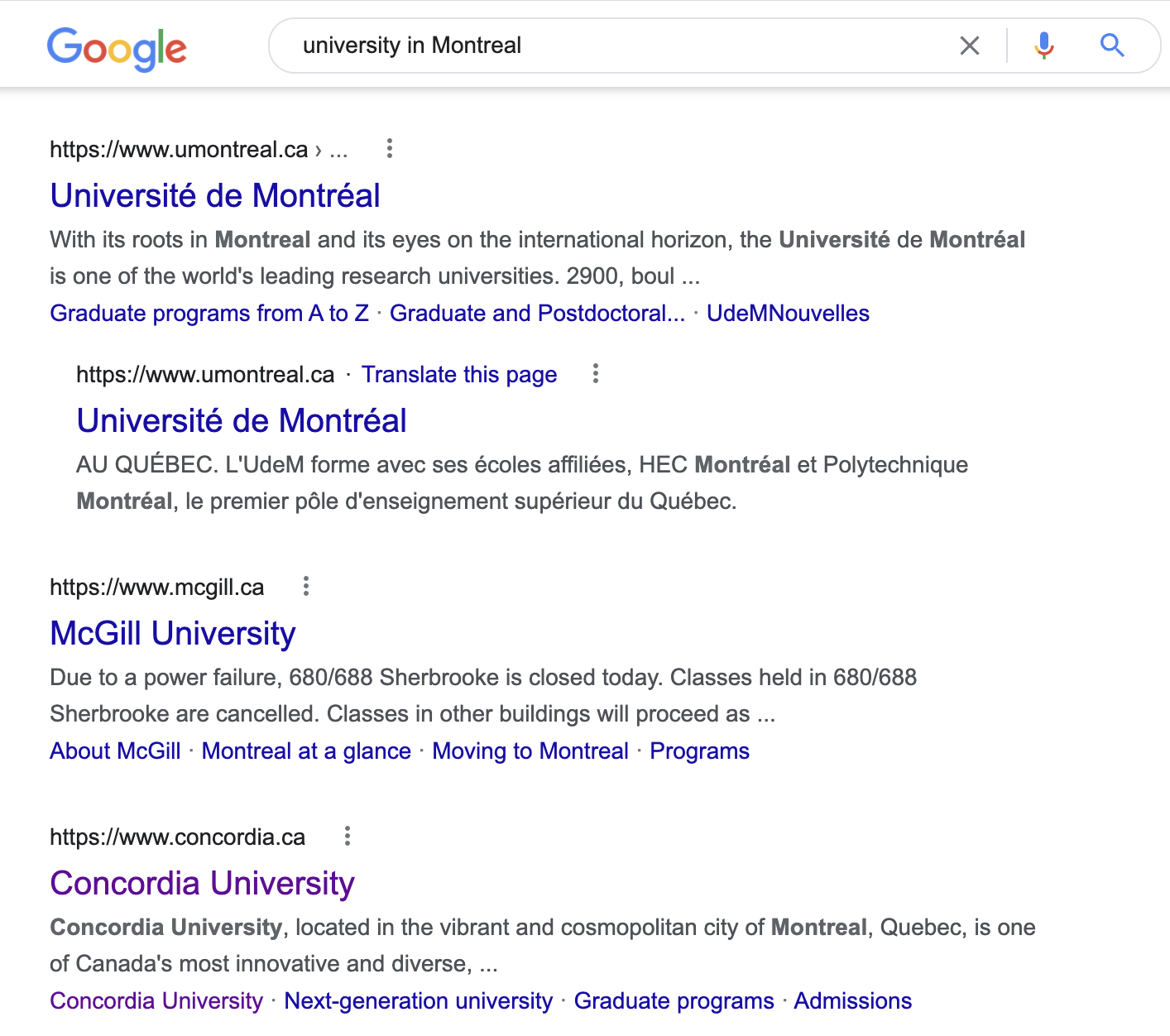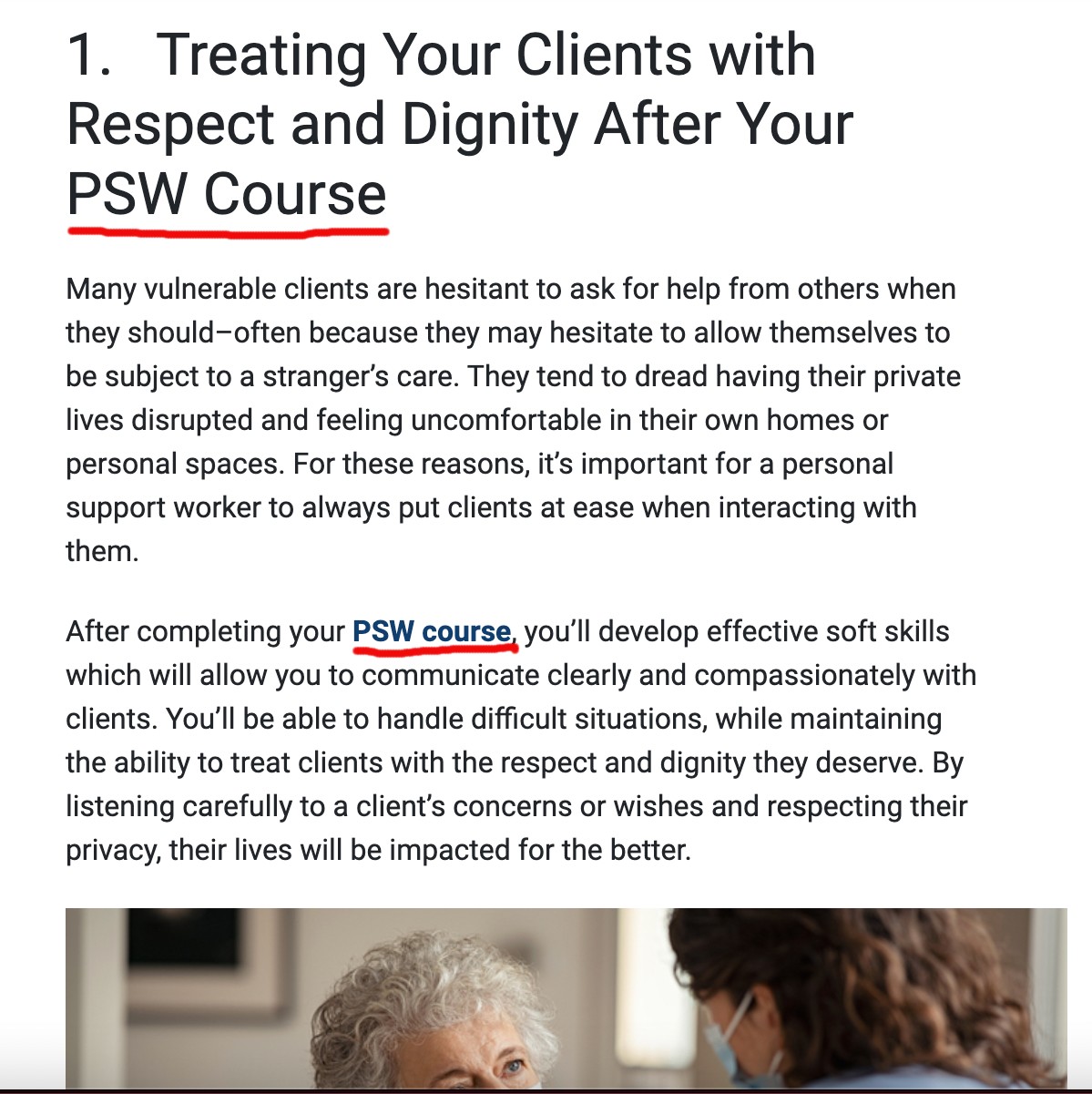For most students, choosing the right school for their education starts with a simple search. Today, it’s easier than ever for students to conduct research on different institutions through search engines like Google. For schools, this can be a blessing when you know how to land a top spot in search engine results. The best place to start is SEO, so continue reading to discover our top higher education SEO tips. And if you want guidance on creating the right strategy for your school, then check out our services for SEO for educational institutions.
Search engine optimization is the best way to drive traffic to your school’s website. Building awareness of your institution is the first step to generating leads. With a good SEO strategy, you can expand your school’s digital presence and grab the attention of prospective students. Below, discover some tips on how you can harness SEO solutions to improve the visibility of your website and drive results.

1. Stay on Top of Keyword Trends
Keywords are your ticket into search engine results. They are what prospective students will type into search engines like Google to find your school and its programs. It’s no surprise that 71% of marketers report using strategic keywords as their number one strategy for SEO.
Any SEO strategy starts with identifying the keywords you should use to garner the right attention. Performing keyword research will help you identify the intent of your prospects and the search terms they commonly use.
In doing so, it’s a good idea to take a look at your institution and what it offers, particularly in terms of its location, programs and any identifying features. You can then think about the kinds of keywords that prospects might use to find your school in their research. For example, if your school offers remote learning and is hoping to attract more students in that area, a keyword like “online courses” would be a good option.
Alexander Nachaj, HEM’s Manager of Search and Analytics, shared some of his higher education SEO tips for keyword research. “A sort of hidden in plain sight tip is you can do some research using Google search itself and viewing the auto-complete results,” explains Alexander. “Doing this can be a great way to brainstorm keywords, but also see if ones you are planning on using even appear in the suggestions – and by extension are frequently searched,” he says. For example, by typing “science courses” into Google, the autocomplete function suggests the next phrases that people most commonly search for.

Your school can then opt to integrate some of the most popular keywords, such as “science courses in high school” or “science courses online,” into its digital content. By understanding patterns in user behaviour, you can work to satisfy their search intent and generate more leads for your website.
2. Enhance Local SEO for Education
Location is one of the top considerations for prospective students when thinking about their education. As much as they research program offerings, many students are drawn to the experience they’ll have while studying in a certain place. And this fact should be reflected in your SEO strategy.
Without local SEO, your website is competing with global traffic while missing out on the pool of prospects who are searching locally. A McKinsey survey of student’s first-choice schools in 2020 revealed that 30% of respondents wanted to stay close to home. At the same time, local intent makes up 46% of all Google searches. By optimizing your SEO strategy for location-specific keywords, your school can reach this vast number of users and benefit the most from our higher education SEO tips.
A good way to target these prospects is to first identify the kinds of students that are most attracted to your school. For example, working professionals researching courses are more likely to attend an institution in their local area. On the other hand, high school students may be looking to branch out to a new city for university. Either way, location-based keywords will help prospects land upon your site when searching for schools in a certain area.
For example, a Google search of the keyword “university in Montreal” returns results for schools like Université de Montréal, McGill University and Concordia University. Each of these schools would have optimized its website for local search terms.

Whether you’re hoping to reach more domestic or international prospects, paying attention to the role of location for the benefits of SEO for online education can help you generate better website traffic.
3. Optimize Your Website to Engage Prospects
Your school’s website is the first place that prospects will land after clicking on a search result.
As the competition for user attention continues to grow, first impressions are more important than ever. A good web design will make prospective students want to return to your school’s site and engage with its content.
Beyond creating a better user experience, good site architecture is also something that Google looks out for. Clear navigation, no dead pages, clean URLs and fast load times are all factors that will improve your website’s search engine ranking. A slow, clunky site that is hard to navigate will usually rank lower than a clean, optimized and speedy one.
One of Our Favorite Higher Education SEO Tips: Lead Prospects to Take Action
The primary purpose of your school’s website is to convert site visitors into leads. The website experience plays a few important roles in this process. Firstly, your site should be easy to navigate with its content organized in a clean manner using different page tabs. As Alexander puts it “you wouldn’t want to spend all this work getting people to show up and then have them get lost on your site and leave in frustration.”
Example: The Bishop Strachan School’s website features drop-down navigation menus at the top of its homepage along with a search bar so that visitors can find what they’re looking for. These tabs lead prospects to learn more about “Admissions,” “Academics,” “Student Life” and more at the institution. The use of the school logo and colours also creates a web design that is consistent with its brand image.

Source: The Bishop Strachan School
You’ll also want to make it easy for prospects to engage in the next step of their journey. That means having clearly defined Calls-to-Action (CTAs) with links to relevant applications or forms on your website. Don’t skip this higher education SEO tip!
In the example below, the Academy of Learning has designed a webpage that features a number of customized CTAs. Prospects visiting the homepage are immediately met with different means of engaging with the school. They can book an info session, learn more about funding or fill out an application.

Source: Academy of Learning
While improving the accessibility and navigation of your website, CTAs ensure that each section of content has a clear purpose in converting interested readers into leads.
Create a Mobile-Friendly Design in Line with Higher Education SEO Tips
Given that mobile accounts for approximately half of the web traffic worldwide, adopting a mobile-first approach to your school’s website is key to engaging prospects today. Creating a mobile-friendly website ensures that you are able to generate traffic from users wherever they are. Many prospects will return to your site but from different devices. It’s up to your school to ensure those prospects can access your website and receive the same experience regardless of the device they use.
The architecture of your site becomes all the more important on a mobile, as the content needs to be compressed and organized onto a much smaller screen. For that reason, many schools opt to group their pages into a hamburger menu for a cleaner aesthetic and easy navigation.
Example: The homepage of The University of Melbourne’s mobile site includes a hamburger menu in the top right corner that directs visitors to different pages of the website. Users can easily close the menu to keep scrolling down the homepage.

Source: The University of Melbourne
With limited space, prioritization is all the more important for mobile websites. Make sure that the information you include contributes to a prospect’s understanding of your school, its program offerings and the next steps they need to take to enroll.
4. Curate Your Content to Boost Your School’s Rankings
Meaningful content that connects with your target audience is a surefire way to drive some organic traffic to your school’s website. According to Alexander, “content is the backbone of any SEO strategy. However, you can’t just write anything and hope that it appears on search engines.”
Ask yourself what your target audience is looking for and whether your content meets their needs. Students turn to your school because it’s the best at what it does; they want to know that they’re studying at a reputable institution with experts in their field. To satisfy that intent, regularly update your website with relevant, high-quality content that will position your school as an authority on a certain topic. When it comes to SEO for education, keep in mind that Google also ranks high-quality content, so carefully considered pieces will boost the visibility of your website.
Cumberland College’s website features blogs that explore various topics and tactics in digital marketing. As an institution that specializes in training students for the digital marketing industry, blogs such as the one below appeal to the school’s target audience with content that informs and inspires their interest in the field.

Source: Cumberland College
When developing a content strategy, you should also avoid cluttering your website. As a general rule, focus on creating informative pieces on topics like degree programs, financial aid, campus and nearby cities and faculty. That way, you can ensure that the content of your website stays true to your school’s unique selling points.
Pay Attention to Keyword Placement
According to Alexander, keywords are a good place to start in content creation: “when producing content, it often helps to write content based around the keywords you’ve already researched and know are high volume.” Once you know which keywords you’re using, you can focus on integrating them in the best possible way.
Aim to incorporate keyword phrases in the title, subheading, image caption and meta-description of your blog posts to boost their search engine visibility. Strategic links to additional sources on your school’s website can also generate more engagement with the site.
Example: This blog post from Medix College features the keyword “PSW course” in the subheading and body of the text. The title of the post – 3 Ways You’ll Impact the Lives of Your Clients After Personal Support Worker Training – is engaging while managing to include the keyword “Personal Support Worker Training.”

Source: Medix College
While keywords are a must, take care not to compromise the readability of your content. Keyword integration should be natural and reader-friendly; first and foremost, you’re writing for the user, not the search engine.
Give a New Life to Old Content
Historical optimization is a simple marketing strategy that involves updating existing content and publishing it as new. This allows you to extend the shelf-life of popular blogs and optimize them to meet the needs of prospective students today. Not only will this improve the authority of your school’s website by keeping its information relevant, but it’s also a means of generating new traffic from older content – and with relatively little work.
When performing historical optimization, remember to fact-check all information, incorporate new keywords based on recent keyword research and ensure that content is consistent with your current program offerings.
5. Review and Adapt Your SEO Strategy to Reflect Our Higher Education SEO Tips
The digital landscape is constantly changing and a good SEO strategy is one that evolves with it. That means taking a look at regular SEO reports that show how your keywords are performing, where you stand in the search engine rankings and which goals may need renewed focus. As a rule of thumb, you should review your website’s performance every three to six months to understand how much traffic has grown as a result of your SEO tactics.
If you’re wondering how you can measure this impact, Google Analytics is a tool that will allow your school to see the value of different parts of your marketing strategy in driving traffic. In particular, you can figure out which of your keywords prospects most commonly use to arrive at your website. By analyzing this data, your school can identify any areas that need improvement while playing to your marketing strengths.
SEO is an ongoing process and one that you can capitalize on to generate more traffic for your school’s website. Students of all ages rely on search engines to identify and satisfy their educational needs. By putting the time and effort into developing a comprehensive SEO for schools strategy, and aligning your efforts with our higher education SEO tips, your school’s website can climb the rankings and reach prospective students wherever they are.







